Features
Brief descriptions of the major features available on my instruments. Many of these are part of the standard instrument; others are optional, sometimes at extra cost.

Acoustic Port
Acoustic ports (or soundports, as they are also called) typically are circular holes cut into the sides of a guitar near the neck. They are a relatively new concept with some subtle but very real acoustic advantages.
Acoustic ports function something like the soundhole in that they work in partnership with the inner air resonances of the instrument to release sound from the instrument. But the sound that comes from the port is primarily (if not entirely) for the player's benefit, allowing the player to hear the sound of the guitar more completely. In modern, highly projecting guitars, this is particularly beneficial.
Acoustic ports on the sides near the neck have little or no effect on the sound that the audience hears at the front of the guitar. This is perhaps surprising and somewhat counterintuitive, as most people (myself included) initially think that there would be a loss of sound. This is easy to test, however, by covering and uncovering the acoustic port while playing.
But if there is no effect on the sound for the audience at the front of the guitar, there is a definite and positive effect for the player, who can now hear much more easily and completely the sound of the instrument.
For some time I cut acoustic ports into the guitar on both sides of the neck, as do many other builders, including Bob Ruck and Kenny Hill. At Randy Reynolds' suggestion, however, I now cut a single large acoustic port (total area is the same) on the side nearest the player. This is a subtle improvement, with less sound energy lost in the direction of the floor.
I now offer acoustic ports in two styles. Style 1 is a circular hole, as in the upper photo. Style 2 is an oval hole, as in the lower photo. The area of the Style 2 oval is larger, and it produces a correspondingly greater sound for the player.
Acoustic ports are optional on my instruments at additional cost.
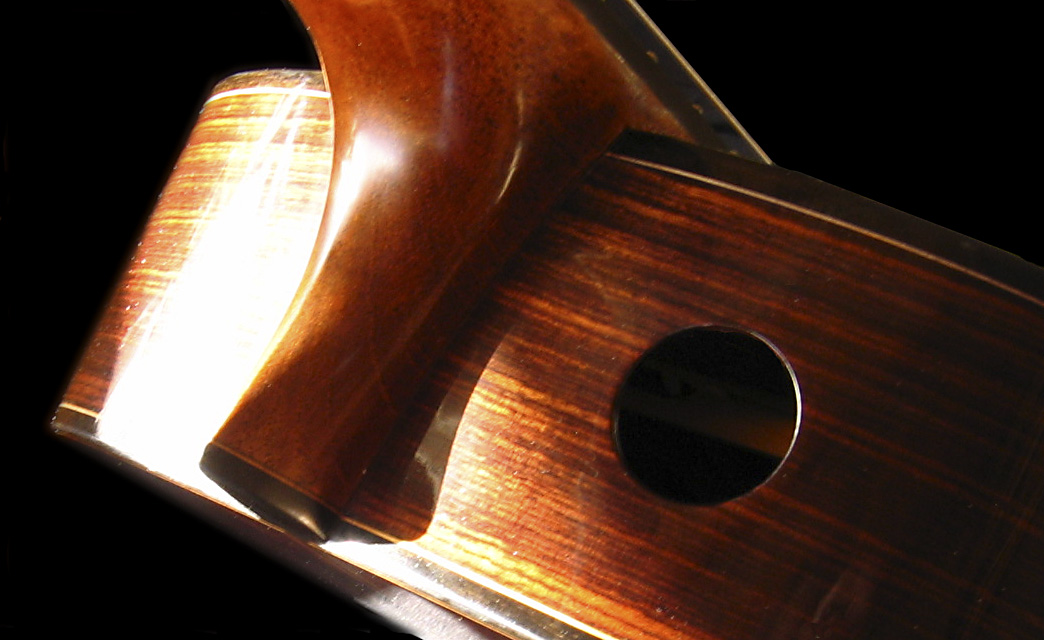

The interaction of an acoustic port and the internal air resonances is complex, and we are no doubt just beginning to learn how they work, and how we might make them more effective. Those with an interest in experimental instruments and air resonances may enjoy reading about Carleen Hutchins' experimental violin Le Gruyere (think cheese!), which has a series of holes in the sides around the entire instrument. In her tests, Carleen blocks the unneeded holes with corks. Alan Carruth has done something similar with a guitar that he called "The Corker".
Further reading about acoustic ports:
--Cyndy Burton, "There's a Hole in the Bucket", American Lutherie, 91 (Fall 2007), pp. 6-7.
--Robert Ruck, "Three Holes Are Better than One", American Lutherie, 91 (Fall 2007), pp. 12-13.
--Alan Carruth, "The 'Corker" Guitar: A Sideport Experiment", American Lutherie, 94 (Summer 2008), pp. 56-62.
--R.M Mottola, "Blind Listening Evaluation of Classical Guitar Soundports", American Lutherie, 96 (Winter 2008), pp. 54-57.

Bevel
Several years ago, at the request of a customer from New Jersey, I constructed a guitar with a "bevel", as this feature has come to be called. It was quite successful, and it has proved to be very popular. Nearly all of my recent instruments include a bevel.
A bevel is purely for the comfort of the player. To the best of my knowledge the first bevels were made by Grit Laskin of Ontario perhaps 20 years ago, and they now appear on many contemporary guitars. For the bevels on my instruments I imitate the flowing lines in the designs of Kevin Ryan.
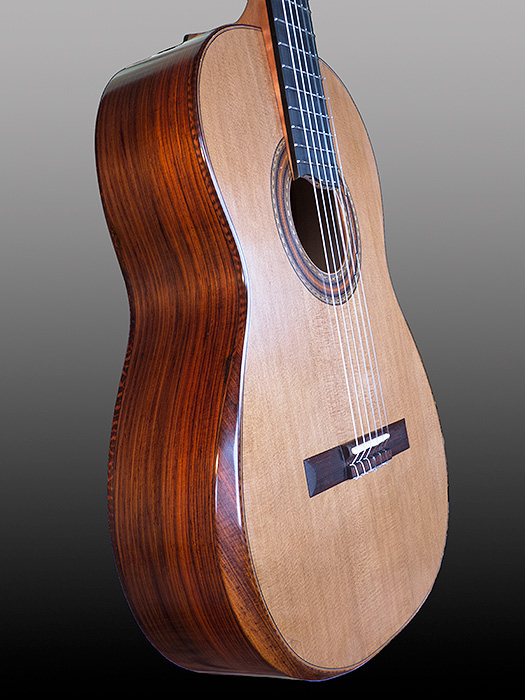
A bevel is optional on my instruments at additional cost. The bevels on the guitars in the photos are made from snakewood and ebony, the same wood as the bindings.
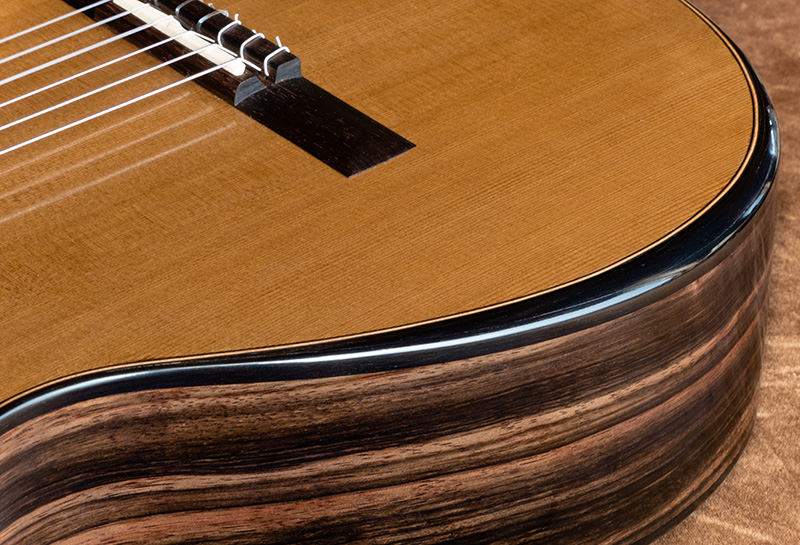


Armrest
The idea of adding an armrest was suggested to me by a player from Texas, who sent me photos of one of Greg Smallman's instruments with its integral armrest.
An armrest provides three primary benefits: it lessens damping of the top caused by the right forearm; it is potentially more comfortable for the player; and it absorbs the wear to the finish that would otherwise happen on the top, the binding, and the side. These benefits are of particular importance for ultra-thin-topped instruments (such as Smallman's lattice-braced guitars), but will subtly improve any guitar, including double-tops.
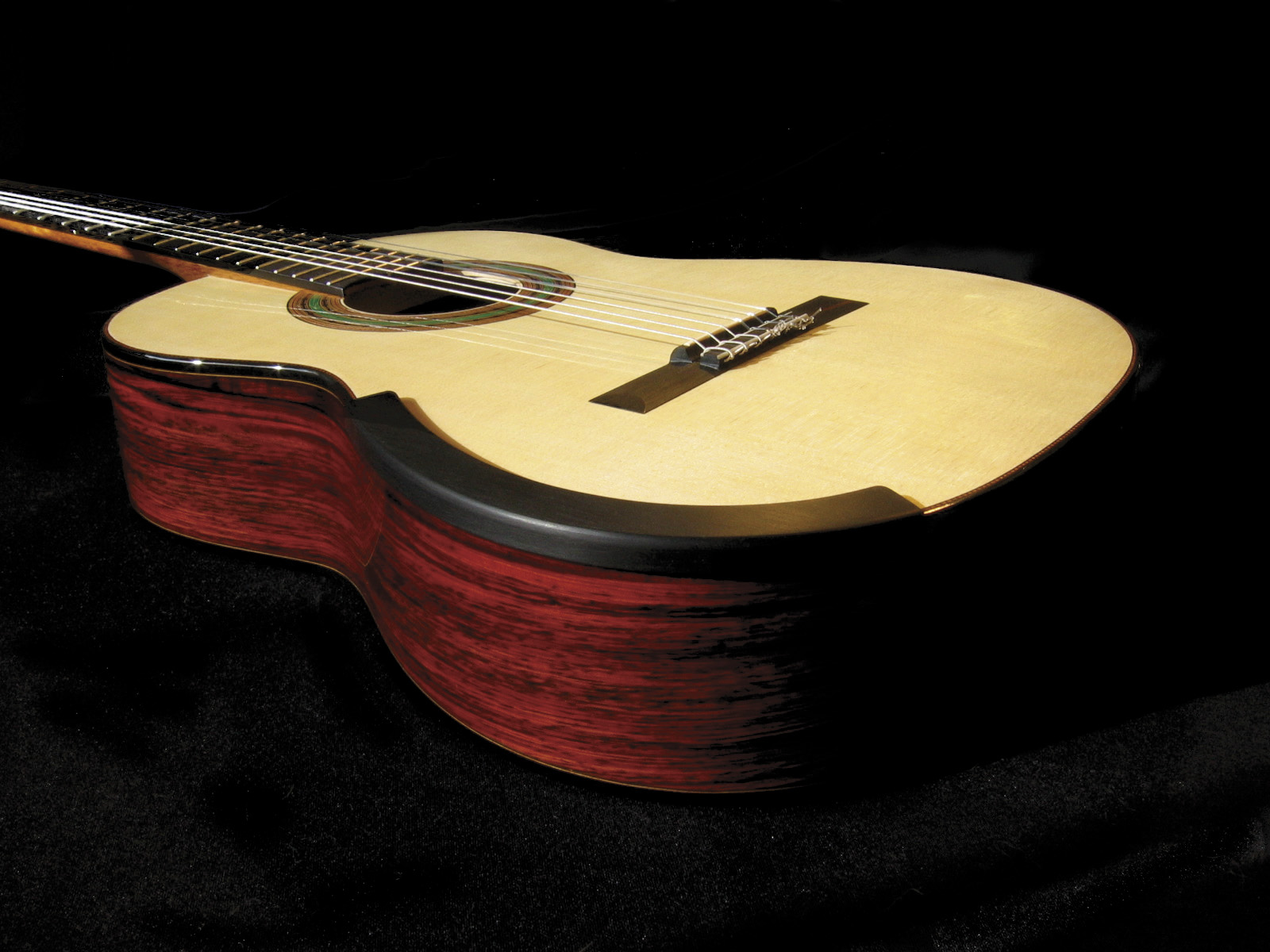
I make the armrests for my instruments from several thin layers of wood laminated into a curve to follow the side and into an arch that is positioned slightly above the top. The armrests in the photos are made of ebony, but they can be done in any hardwood. Snakewood is particularly attractive, especially when used in conjunction with snakewood bindings and tuner knobs.
I fasten the armrests to the guitar with five thin wooden dowels. The fastening is reversible by a luthier, but from the players' perspective it should be considered permanent. The armrests have an oil finish, similar to the finish on the bridge and fingerboard.
Armrests are optional on my instruments at additional cost. Common wood choices are Ebony and Snakewood. I recently constructed a very beautiful armrest from Bloodwood.
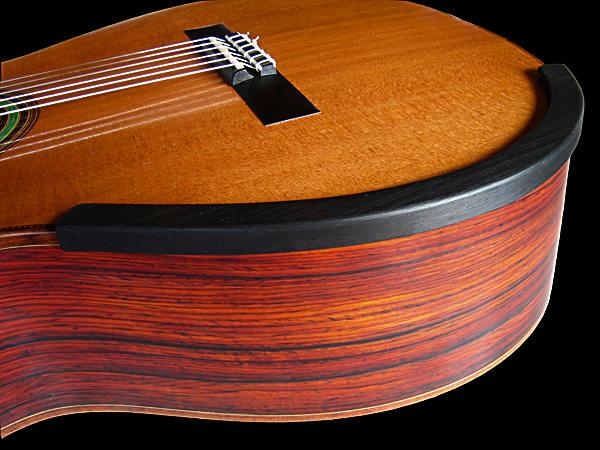

Access panel
For many years I have offered removable access panels on my instruments. These provide easy access to the interior of the guitar during construction and voicing. After construction, if repairs or revoicing are ever needed, an access panel is extremely helpful.
Some types of instruments, such as violins and lutes, can be disassembled relatively easily. For them a removable panel would offer only a small advantage. Guitars, however, are constructed quite differently and can be taken apart only with great effort, meaning that the only practical access to the interior of the instrument is through the soundhole, a nightmare for those of us with oversize arms.
I first encountered removable access panels nearly forty years ago on Richard Schneider's beautiful guitars. His removable panels had been developed (and apparently patented) by Abe Wechter, a Michigan luthier working with Richard at the time.
I have developed my own system for a removable access panel employing magnets as the latching mechanism. Like Richard and Abe, I locate the removable panel at the former location of the tailblock.

The access panel has no effect on the sound of the instrument. It does add a relatively small amount of weight to the instrument, but at a location that helps counterbalance the weight of the neck when the guitar is held in playing position.
A removable access panel is an option available at extra cost.



12-Hole Bridge
I first saw a 12-hole bridge many years ago on a guitar made by a Mexican builder. It's a simple and elegant solution to tying strings, but even more important, the design ensures a firm break angle as the strings pass over the saddle. I use a 12-hole bridge on all my instruments.



Elevated fingerboard
An elevated fingerboard is a standard feature on all my instruments. The primary advantage is improved left hand playability on the upper frets, although the increased distance between the strings and the top is also advantageous for the right hand.
At the neck/body joint the distance from the surface of the fingerboard to the top is 14 millimeters, a comparatively moderate distance, but one that players tell me is adequate and very comfortable. I have created the elevation of the fingerboard by giving the neck a negative angle in relation to the guitar body, rather than by changing the configuration of the upper bout, as a few other builders (Tom Humphrey on his Millenium guitars and Greg Byers, for example) have done. The elevated fingerboard on my instruments is visually unobtrusive, and the guitar retains its traditional appearance.
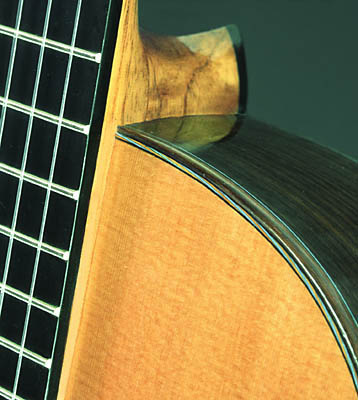
As simple as it looks, the geometry of the elevated neck can be fairly complex. Further reading, for those wanting to tease their spatial imaginations:
--R.M Mottola, "Fretboard/Top Plate Geometry of the Flattop Guitar", American Lutherie, 111 (Fall 2012), pp. 32-41.

High frets
A few customers (former rock and roll guitarists, for the most part) have asked for higher than usual frets, and I now offer that feature to all my customers. High frets facilitate vibrato and barreing, and generally aid in the development of a
"lighter" left hand. Most players adapt very quickly.
So what is "high"? On my instruments standard frets are approximately .8 to .9 mm high, and I consider a crown height of 1 mm or more to be "up there". The crown height on my personal instrument is 1.1 mm, and I find it a dream to play.
This is a complicated subject, involving many factors, including neck shape and thickness, hand size, playing technique, and habit. I welcome correspondence from players about their experiences.
High frets are part of the standard configuration of my instruments.

Oiled neck
An oiled neck, compared to one with a shellac or varnish finish, has noticeably less friction, an attractive feature for speed freaks with sticky thumbs. An oiled neck is now part of the standard configuration of my instruments.
Note that an oil finish is not as long-lasting as either shellac or varnish, particularly in a high wear area such as the neck. Fortunately, an oiled neck can be refinished easily by the player, preferably as part of an annual maintenance program.
Beginning with guitar #297 the oil finish on the necks of my guitars is catalyzed tung oil, which is both tougher and longer-lasting than the oil finish I used previously.

Ivory nut and saddle
For many years I used fossilized mammoth ivory for the nut and saddle on my instruments. Compared to the bone that I used formerly, mammoth ivory gives a noticeably smoother, creamier sound, something I attribute to the density (and perhaps homogeneity) of the material.
Most mammoth ivory comes from 10,000 year-old tusks found in the permafrost in Siberia. Unfortunately, due to recent export restrictions, mammoth ivory of good quality is now extremely hard to find, and when located is very expensive. As a result, I now offer mammoth ivory nuts and saddles for my instruments as an option available only at extra cost.
P id="para2">Update March 2018: It has been several years since I was last able to obtain mammoth ivory of suitable quality. I continue to sarch for a reliable source. In the meantime, I've located a source of bone that seems to me to match the density and hardness of high quality mammoth ivory, and that is what I now use on my instruments.

|




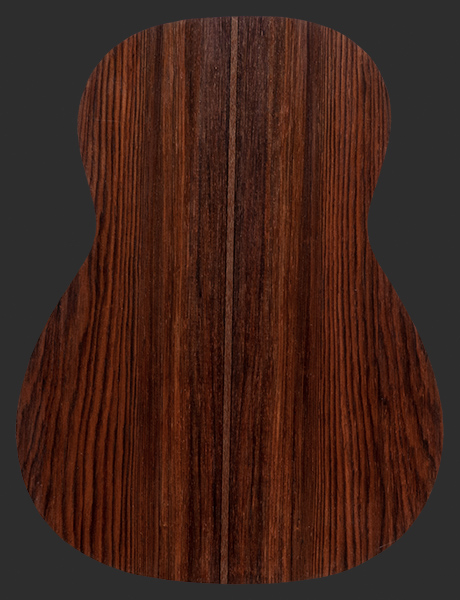
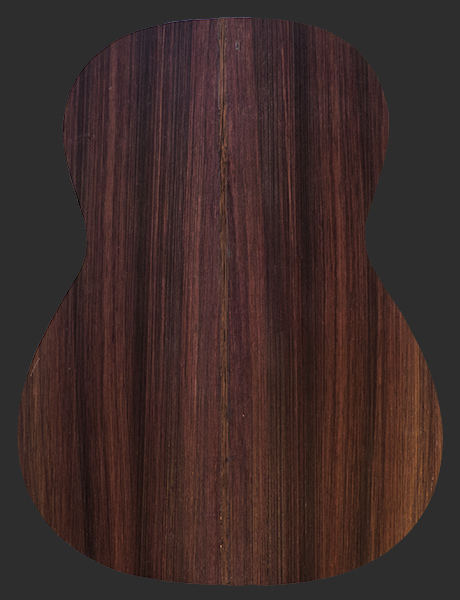
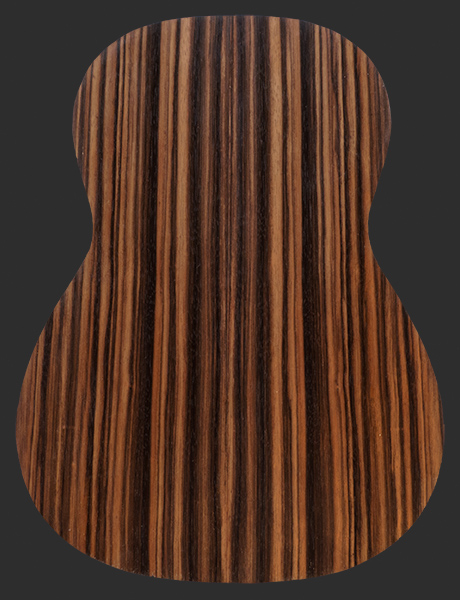
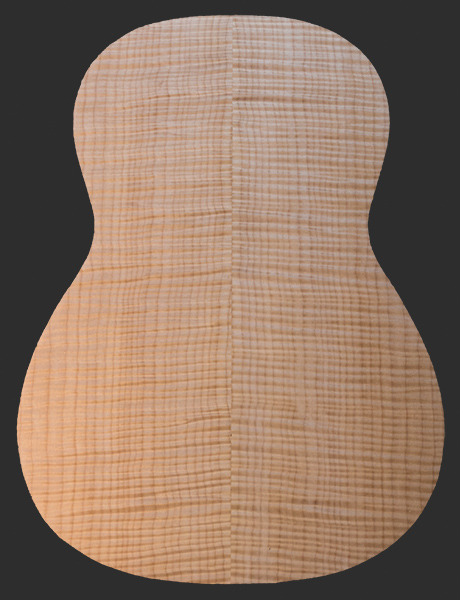
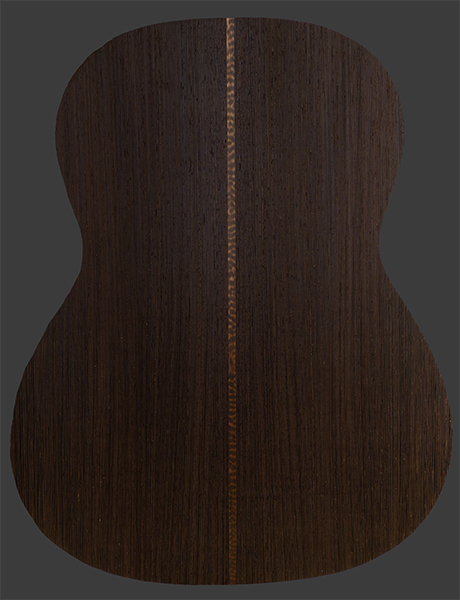
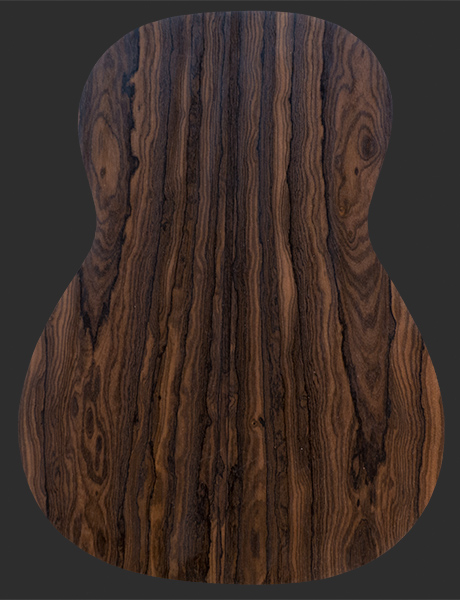
![]()